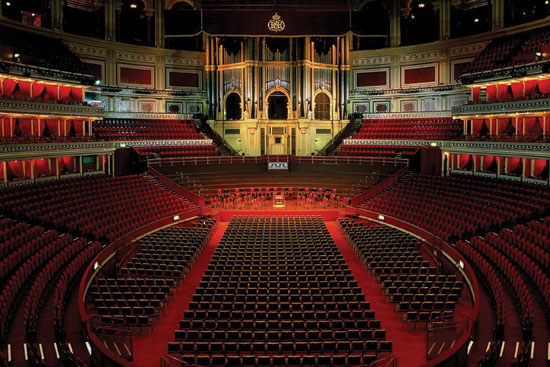Acoustic Spaces, Meeting Places by Pemi Paull
/ November 1, 2011
Version française...
Flash version here.

The first public
opera house was the Teatro San Cassiano in Venice, Italy, which opened
in 1637. When Henry Purcell (1659-1695) was composing, there was no
opera house in London. In Germany, the first opera house was built in
Hamburg, in 1678. Throughout the 17th and 18th
centuries, these buildings were often financed by the ruling classes,
whose patronage of the arts was used to endorse their political ambitions
and bolster their social prestige.
During the classical
period, one of the most important developments in the musical culture
of Europe was the growth in popularity of the public concert. Increasingly,
it became possible for a composer to survive outside of the employ of
a ruler, or of a noble family. Although the aristocracy continued to
play an important musical role in European society well into the 19th
century, composers such as Mozart began organizing public subscription
concerts, which usually featured their own music.
Chamber music and
solo playing continued to be performed in the home, the salon, and other
intimate settings, but by the late 18th century, the public
hungered for larger orchestral concerts. The increasing popularity of
the public concert, coupled with the new trend of the composer as impresario,
naturally had a strong impact on the growth of the orchestra, a medium
that seemed to be naturally designed for big public spaces. Obviously,
a larger performance venue meant the possibility of a larger public,
which in turn meant more subscribers and thus greater revenue. As a
result, symphonic music (including opera and oratorio) became increasingly
extroverted in character, and composers gradually expanded the size
of the orchestra to accommodate this expanded musical vision.
Until the end of
the 19th century, designing concert halls with good acoustics
was often the result of good luck on the part of the architect. Once
a successful concert hall was designed, architects would copy the model,
attempting to recreate the same acoustics, but from a scientific point
of view, no one really understood what made one concert hall succeed
and another one fail. That there are today a number of notable examples
of great concert halls from earlier times is the result of a combination
of luck and natural selection. Concert halls that failed were often
destroyed, and fire claimed many others. For example, the Royal Opera
House at Covent Garden, which opened in 1858, was the third concert
hall to be built on the site, having burned down twice previously. The
State Opera in Berlin, originally built in 1742, also exists today in
its third incarnation, having burned to the ground in 1842 and bombed
twice during WWII.
The origins of architectural
acoustics as a science began at Harvard University’s Fogg Art Museum.
After it was built in 1895, a young physics professor named Wallace
Sabine was asked to help improve the appalling acoustics of the building’s
lecture hall. Using a stopwatch, organ pipes, and seat cushions, Sabine
spent the next three years scientifically testing the room’s acoustics.
The Fogg Art Museum’s lecture hall ended up being torn down as its
acoustical problems were never rectified, but in the process of attempting
to fix the acoustics, Sabine developed an equation for reverberation
time. The unit of a material’s sound absorption, the sabin, is named
after him, and Wallace Sabine is considered the father of modern architectural
acoustics.
The modern concert
hall has since evolved into several distinct structural forms. Advances
made in the fields of design, architecture, acoustics, as well as evolving
notions of performance practise, have had a continuing impact on the
living tradition of the public performance space.
These forms include
the circular and elliptical shaped hall, which risk focusing sound on
‘hot spots’. These shapes are favoured by architects, but tend to
make acousticians nervous. The Royal Albert Hall is an example of an
elliptical hall. The influence of amphitheatres can be seen in fan-shaped
halls, such as the Barbican, but this design can also lead to problems,
due to a lack of side reflections.
The shoebox design,
through centuries of trial and error, has been established as a good
shape for concert halls. The hallmark of the shoebox design is a long,
tall and narrow space, allowing for the sound to reflect beneficially
off the sides of the hall. The Vienna Musikvereinssal, the Leipzig Gewandhaus
and the Amsterdam Concertgebouw are all examples of the shoebox design,
as is the new home of the OSM in Montreal.
Without a doubt,
the music of the next century will herald further innovations to the
concert hall. New instruments, advances in computer-driven technology,
and musical avenues as yet unimagined, will push the design of future
concert halls in new directions. However, in the past century, much
has been learned about the physics and the psychology of acoustics, so
it is probable that acoustic architects will continue to desire that
their halls sound like classic halls such as those in Vienna and Amsterdam,
and that much of the way forward lies in the innovations of the past.
Version française... |
|


